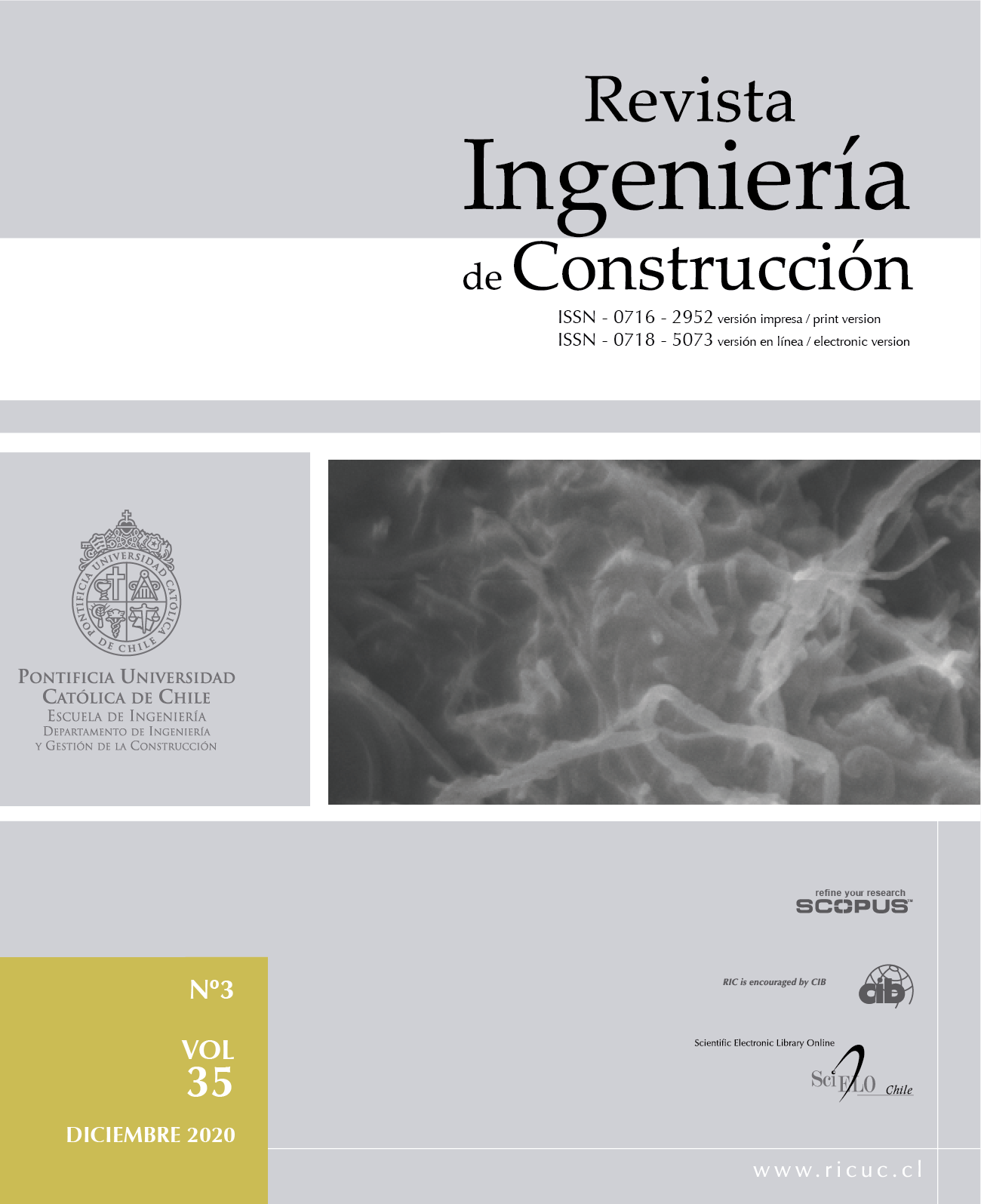Evaluation of the effectiveness of the use of the TDI (Traffic Densification Index) for the prediction of the behavior of nano-modified asphalt mixtures against permanent deformation
DOI:
https://doi.org/10.4067/S0718-50732020000300322Keywords:
Traffic densification index, nano-modified asphalt mixtures, prediction, permanent deformationAbstract
This article shows the results of a study on the evaluation of the use of the TDI (Traffic Densification Index) for the prediction of the behavior of a conventional asphalt mixture and two nano-modified asphalt mixtures (one with 2% of carbon nanotubes, CNTs, and another with 3% of organophilic nanoclay, NA) against permanent deformation. The mixtures were designed with equivalent granulometries and different asphalt binders (a conventional and two nano-modified binders). The design of the mixtures was made according to the Superpave method, and the TDI of the mixture was determined from the curves obtained in the compaction test (%Gmm vs number of cycles). For each mixture under study, two slabs measuring 50 x 18 x 5 cm were compacted on the BBPAC slabs compactor of IFSTTAR (Institut Français des Sciences et Technologies des Transports, de L'Aménagement et des Réseaux). These slabs were subsequently subjected to the permanent deformation test in the French traffic simulator, Orniéreur. The TDI obtained was compared with the performance of the mixtures in the permanent deformation test. The results obtained show that the TDI was not effective in predicting the behavior, in terms of permanent deformation, of asphalt mixtures with asphalt binders different from the conventional binder (nano-modified).


